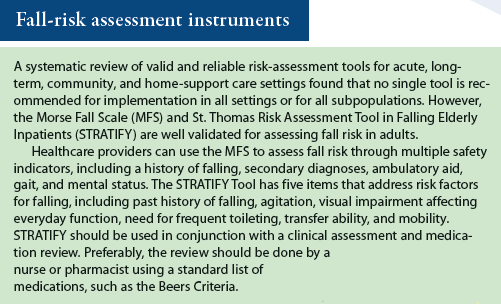Indicators on Dementia Fall Risk You Should Know
The Main Principles Of Dementia Fall Risk
Table of ContentsGetting My Dementia Fall Risk To WorkAn Unbiased View of Dementia Fall RiskDementia Fall Risk for DummiesNot known Facts About Dementia Fall RiskExcitement About Dementia Fall Risk
You may be nervous since you have actually had an autumn prior to or due to the fact that you have actually discovered you're beginning to really feel unsteady on your feet. You may have observed adjustments to your health, or simply feel like you're reducing down a little. Whatever the reason, it isn't unusual to become mindful and shed self-confidence, and this can stop you doing things you used to do and make you feel extra isolated.If you've had a loss or you've begun to really feel unstable, tell your physician even if you feel great or else. Your physician can inspect your equilibrium and the means you stroll to see if renovations can be made. They may have the ability to refer you for a falls danger analysis or to the drops prevention solution.
This info can be gotten via interviews with the individual, their caretakers, and a testimonial of their medical documents. Begin by asking the private concerning their background of falls, including the regularity and circumstances of any recent falls. Dementia Fall Risk. Ask about any kind of mobility issues they may experience, such as unstable or difficulty walking
Conduct a thorough testimonial of the individual's drugs, paying particular focus to those known to enhance the danger of drops, such as sedatives or medicines that reduced blood stress. Establish if they are taking multiple medications or if there have been current changes in their medication regimen. Review the person's home setting for possible dangers that might boost the threat of falls, such as poor illumination, loose rugs, or lack of grab bars in the restroom.
The Ultimate Guide To Dementia Fall Risk
Guide the individual via the fall threat evaluation type, clarifying each question and taping their reactions properly. Guarantee that the private comprehends the objective of the evaluation and really feels comfy supplying sincere answers. Compute the total risk rating based on the responses offered in the evaluation type. Identify the person's risk group (reduced, tool, or high) based on the complete score and the presence of automated high-risk condition elements.
Frequently check the individual's development and reassess their threat of falls as required. Supply continuous education and assistance to advertise security and lower the threat of drops in their day-to-day living activities.
Numerous studies have shown that physical therapy can aid to decrease the risk of dropping in adults ages 65 and older. In a new research (that considered drops danger in females ages 80 and older), researchers computed the financial effect of selecting physical therapy to stop drops, and they found that doing so conserves $2,144, including all the hidden prices of your time, discomfort, missed life occasions, and the bucks paid for solutions.
See This Report about Dementia Fall Risk
Examining your heart rate and blood stress measurements at rest and while you turn (from resting or existing to standing). An easy examination of your reasoning (cognitive) abilities. Examining your equilibrium, stamina, and walking capability. A simple vision test. Analyzing your feet and footwear. A home security analysis. Based on the assessment results, your physical specialist will develop a strategy that is customized to your particular demands.
Older adults additional info who have problem strolling and speaking at the very same time go to a higher risk of falling. Dementia Fall Risk. To assist boost your security throughout everyday activities, your physiotherapist might make a training program that will challenge you to keep standing and walking while you do another task. Examples include strolling or standing while counting backward, having a discussion, or carrying a bag of grocery stores
Your physiotherapist additionally can identify which tasks you ought to avoid to stay risk-free. Community-based drops prevention programs assist people to: Reduce their worry of falling. Set goals for increasing their exercise. Make their homes safer. Exercise more to increase their toughness and equilibrium. These programs often are led by volunteer coaches.
All About Dementia Fall Risk

Measles, or rubeola, is an extremely contagious, acute viral infectious condition triggered by the measles virus. Some people think of measles as just a rash and high temperature that improves in a few days; however, measles can create severe wellness problems, specifically in kids younger than 5-years-old. The ideal security against measles is the measles, mumps, and rubella (MMR) injection.
Falls are an usual reason of injury amongst older adults. According to the CDC, in one year alone, fall-related injuries added to over $50 billion in clinical prices (Dementia Fall Risk). In healthcare facility settings, older grownups are at especially high risk of drops since their reduced flexibility from being confined to an area or bed.
The Greatest Guide To Dementia Fall Risk

She has a case history of seizure disorder and hypertension. She is getting an IV mixture and taking Gabapentin and Lasix. She has no history of falls, her stride is constant, and she voids without any problems. The previous registered nurse states that she asks for assistance to the shower room when she requires to go.
Examples of common autumn interventions/measures consist of: Making certain a patient's important products are within reach. Putting the individual's bed rails up with the alarm system on. Assisting a client while they're standing up from bed. Past comprehending how to use the Johns Hopkins Fall Risk Assessment Tool, it's essential that centers click here to find out more include its use into a much more extensive loss avoidance strategy.